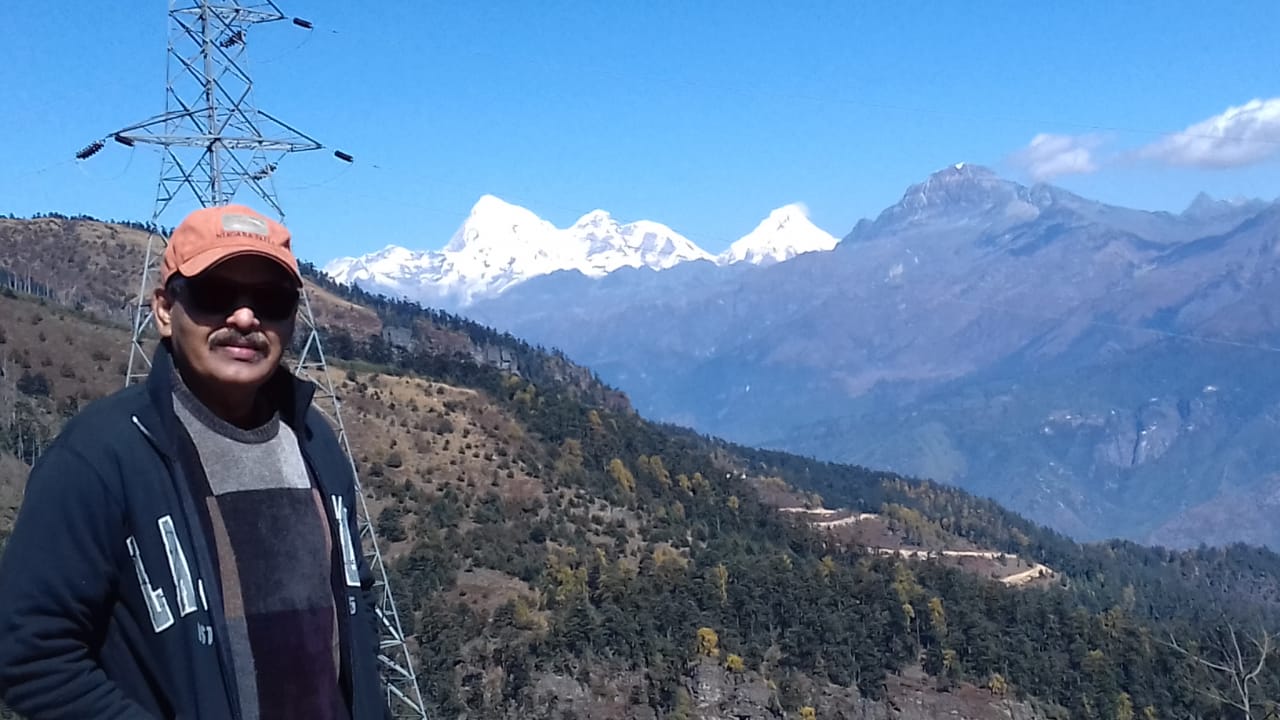Captivated by Chele La
Part 3
My eight-day sojourn at the stunning Royal Bhutan College (RTC) campus and the jaw-dropping experiences in the Land of the Thunder Dragon remain deeply etched in my memory.
Destination: Haa valley, via Chele La Pass (12,454 ft)
The promise of a sacred tourism experience lured me to savor the bliss of solitude, the grandeur of tranquility at the sleepy town on the India-China border. Tour operators usually avoid the Haa valley located to the west of Bhutan bordering Sikkim as traveling to Haa and getting back to Thimphu on the same day takes almost eight hours!
Tshering, my cabbie, drove his Bolero to our apartment at the RTC campus early in the morning with temperature plummeting to minus 1 degree C. The sun was struggling to break through the clouds. “You’ve to hurry up a little. We’ve to go uphill, travel a long distance,” he said, his politeness and civility unmistakable.
We were ready for the captivating Chele La featuring lush forests, waterfalls, grazing yaks and sweeping vistas and left the picturesque campus around 7am. We could feel the blast of cold; my hands were numb.
Chele La (means mountain pass) is the highest point on Bhutan’s roads. The mountain pass offers magnificent views of the surrounding peaks and the Paro and Haa valleys. Haa holds a strategic position stretching over 1700 sq km. It’s about 21km from the disputed India-China border in Doklam. Even though the small town was open to tourists only in 2002, the valley still doesn’t have too many conveyances.
As our car drove up the mountains leaving the nation’s capital, I was overwhelmed by the rule of the road, by the traffic order and discipline. (Blowing horn is a serious offence. Pedestrians use zebra crossings only!)
Are Indian folks listening?
I already mentioned earlier how the tiny kingdom has been keen and fastidious in maintaining the environment. Here you won’t get the raucous cries of tourists (especially the Bengali tourists!) We know how our hill stations are being spoilt by insensitive and scatterbrained Indian tourists. (I mean most of them…)
Tshering was recounting his experience of visiting Haa and we were listening to him with rapt attention as the heavenly Himalayas kept unveiling its magical moments. I was lapping it up to my heart’s content.
“Look, look… That’s Jomolhari (13,084 ft, sometimes known as the Bride of Kanchenzhonga), and the highest peak in Bhutan,” said Tshering, his excitement betrayed a childish wonder. “Jomolhari still remains unconquered,” he added.
Jomolhari (or Chomolhari) straddles the border between Yadong County of Tibet, China and the Thimphu district . The mountain is sacred to Tibetan Buddhists who believe it is the abode of one of the Five Tsheringma Sisters — female protector goddesses (Jomo) of Tibet and Bhutan, who were bound under oath by Padmasambhava to protect the land, the Buddhist faith and the local people.
On the Bhutanese side is a Jomolhari Temple, toward the south side of the mountain about half a day’s journey from the army outpost between Thangthangkha and Jangothang ( 4150 m). Religious practitioners and pilgrims visiting Mt. Jomolhari stay at this temple. There are several other sacred sites near Jomolhari Temple, including meditation caves of Milarepa and Gyalwa Lorepa. Within an hour’s walk up from the temple at an altitude of 4450 m is Tseringma Lhatso, the “spirit lake” of Tsheringma.
We reached Chele La around 10.30am. Clear sky and surreal sunshine greeted us. I was reminded of Walt Whitman: “Keep your face always toward the sunshine and shadows will fall behind you.”
I got off the car, stood transfixed and marveled at the Himalayan grandeur, the mystery of mountains and Nature’s boundless bounty as temperature slipped to minus 4C. ‘Nothing burns like the cold,’ and I was enjoying every single moment of it as I stood at the edge of the cliff. I was awed by the magic mountain, absolute quiet and its profound tranquility.
Jazz legend Loius Armstrong’s ‘What a wonderful world’ (great musical maestro RD’s favorite) comes to my mind:
“I see skies of blue and clouds of white/The bright blessed day/The dark sacred night/And I think to myself/What a wonderful world…”
There were only a few tourists (some westerners and a few Bangladeshis). I saw two Bhutanese army personnel standing guard in that bone-chilling cold. A middle-aged guy was selling tea and coffee. I ambled hurriedly to the shop and ordered a glass of coffee. As I was trying to sip my coffee, I could barely hold the glass! Tingling and numbness struck my right hand… I made vain attempts combating the cold …There was just another makeshift shop owned by a Bhutanese woman. The shop was selling ethnic Bhutanese woolens!
I was savoring Jomolhari’s white grandeur, trying to recall the myth of the mighty mountains. Almost lost in thought. Just then Tshering called me and I was jolted awake as it were…I had to rush to the car, reluctantly, though.
I left Chele La on my way to Haa. But, Jomolhari stays in my heart as I recall Keats’ timeless words “Heard melodies are sweet but those unheard are sweeter…”

Punakha Dzong: His Majesty King Jigme Khesar Namgyel Wangchuck and Queen Jetsun Pema got married here in October 2011
Photo: By author
(To be concluded)





